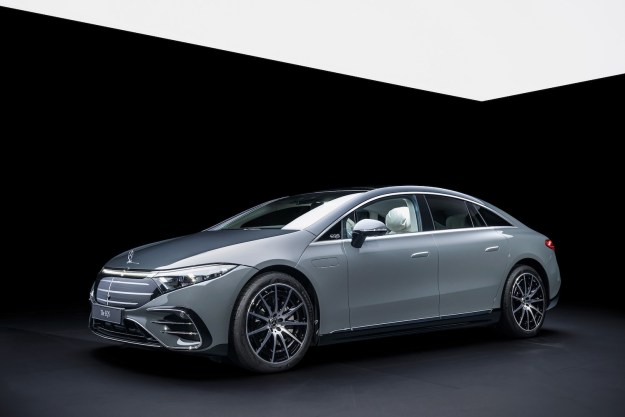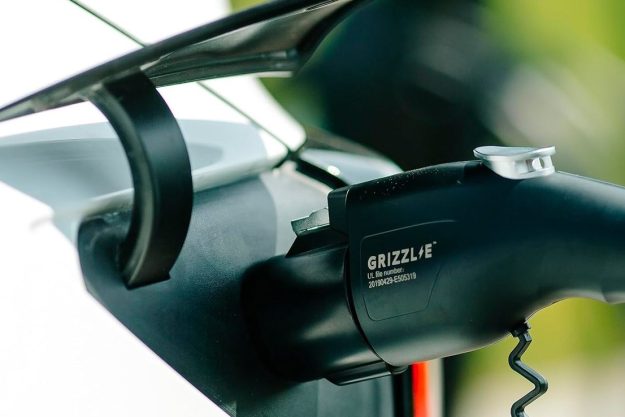Range anxiety is the number one reason motorists cite for not considering an electric model as their next car. We live in a world where a laptop running out of battery can ruin a business meeting for good, and a cell phone with zero-percent charge can leave us stranded five miles away from the precise middle of nowhere. Why complicate our lives and add our car to the equation?
The new Mercedes-Benz EQ Ready app puts range anxiety to the test by monitoring a user’s trips, providing information such as how much electricity they’d actually use, and whether they’d really run out of power before reaching their final destination. We tried it out for a week.
The basics
The app is free to download from the Play Store or the App Store. Install it, set it up, and you’re ready to go for a spin.
The EQ Ready app makes dull statistics more meaningful by showing users exactly where an electric car’s kilowatts can take them.
There are two ways to record a trip. The software can record trips automatically by detecting when you’re in a moving car, or users can choose to manually start and stop the recording process. We selected the first option for the sake of simplicity, and noted it records trips with almost perfect accuracy. It runs discreetly in the background without interfering with other applications such as Google Maps, and it didn’t drain our Sony Xperia Z3’s battery. Imagine how monumentally ironic that would be.
Users are asked to set the outside temperature and choose a car they want to take for a virtual test drive. The highlight of the app is the Concept EQ, an all-electric crossover unveiled last year at the Paris Auto Show. It’s advertised as having up to 310 miles of range, and its lithium-ion battery can take 62 miles’ worth of electricity in just 10 minutes when it’s plugged into a DC fast charger.
The Concept EQ is not in production yet, though we’re told it’s more or less right around the corner along with other EQ-badged electric and hydrogen-powered cars. We’ll cut Mercedes some slack; not having anything to show except a design study and theoretical performance figures never stopped Tesla from selling thousands of cars.
Other cars available in the app include the hardtop and convertible variants of the smart fortwo electric drive, the smart forfour electric drive (a model not sold in the United States), as well as a handful of the brand’s plug-in hybrid models like the C350e and the E350e. We selected the Concept EQ, set our phone down in the center console, and went for a drive.
To charge or not to charge?
Driving to the local airport had virtually no effect on our car’s range. The 5.4-mile trip required just 1.23 kWh of electricity, which lowered the battery pack’s charge from 89 to 88 percent. That’s a rounding error at best.

We could keep the car plugged in at the airport and come back to a full charge, so we would be able to run errands with our electric car for hours on end before heading home and not run out of juice.
An underpowered Italian moped would have admittedly been capable of getting us to the airport. We tested the EQ Ready app again from London’s Heathrow airport to the English capital. It was an 18.6-mile trip that took us nearly an hour. That means we drove at an average speed of just under 20 mph, and it wasn’t even rush hour yet.
The Mercedes Concept EQ has up to 310 miles of range, and its battery can take 62 miles’ worth of electricity in just 10 minutes.
We left the airport with a full charge, and got to our destination near the King’s Cross train station with a 93-percent charge. The battery dispensed about 4.5 kWh of electricity.
After a few days of using the app, the huge battery pack made range anxiety seem like a bad hangover from a different era where electric cars boasted a double-digit driving range at best, but a longer trip to a relatively rural part of France to pick up furniture made it seem all too real again.
Charging stations are few and far between outside of urban and semi-urban areas, and the few scattered across the countryside are typically located in exceptionally random places like right outside of a small pharmacy. Checking out cough drops for 20 minutes doesn’t sound like much fun, does it?
Lessons learned
“310 miles of range” is a vague, generic figure for most motorists. The EQ Ready app makes dull statistics more meaningful by showing users exactly where an electric car’s kilowatts can take them. It’s important to note the information provided is a ballpark estimate at best.

The software didn’t take into account the extra weight we had in the trunk when we went to pick up our furniture, for example. Adding 350 pounds to a car would certainly reduce range in real-life driving conditions.
In addition to putting range anxiety to the test, Mercedes’ EQ Ready app highlights the importance of establishing a comprehensive network of charging stations. Automakers are going to great lengths to bring convenient, long-range electric cars to the masses, and the infrastructure – be it privately- or publicly-funded – needs to catch up.
That’s because your mileage may vary, just like it does when you drive a gasoline- or diesel-powered car and the EQ Ready app reflects that. You’re not going to get anywhere near the gas mileage listed by the United States government if you drive full-throttle up a hill in a hot, sweaty part of Nevada with the A/C on. The same logic applies to electric and plug-in hybrid cars.
The difference is that you can stop almost on a whim and refuel in about five minutes at any of the thousands of gas stations scattered across the planet. Driving an electric car requires more careful planning because refueling takes much longer, and the network of charging stations is evidently still in its infancy in many parts of the world; including the one we tested the app in.
Editors' Recommendations
- 2025 Mercedes-Benz EQS sedan gets new face, bigger battery
- Mercedes-Benz Vision One-Eleven concept looks to the past for inspiration
- We drove Mercedes’ hand-built EQXX concept, and it’s unlike any other EV
- Mercedes-Benz Vision EQXX concept is a luxury EV with a 621-mile range
- Apple Maps’ new EV feature aims to eliminate range anxiety









